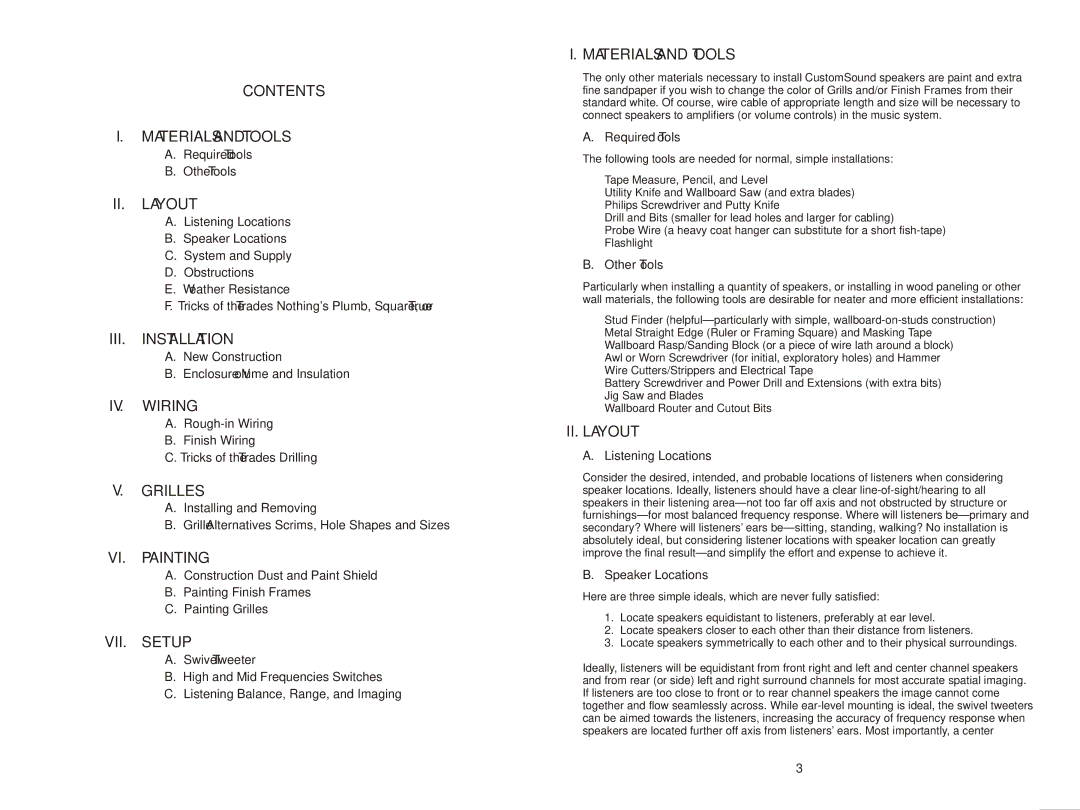CW160S, CW160R specifications
The PSB Speakers CW160R and CW160S are advanced in-wall speakers designed to enhance the home audio experience through superior sound quality and thoughtful engineering. Both models showcase PSB's commitment to producing high-fidelity sound in versatile applications, making them suitable for both music enthusiasts and home theater installations.The CW160R model features a 6.5-inch polypropylene cone woofer that delivers deep bass response while maintaining clarity in the midrange frequencies. This is complemented by a 1-inch aluminum dome tweeter, which provides crisp highs and a wide soundstage. The premium-quality components result in a balanced sound signature that ensures every note is reproduced accurately and musically.
On the other hand, the CW160S is designed similarly but tailored to meet specific soundstage and placement requirements. While it shares the same 6.5-inch woofer and tweeter configuration as the CW160R, the CW160S includes an additional feature which may include enhanced tuning to suit surround sound applications. This makes it an ideal choice for home theater systems where precise audio positioning is crucial for an immersive experience.
Both speakers feature PSB's unique mounting system, allowing for quick and simple installation. The built-in dog-ear brackets accommodate a variety of wall types while ensuring a snug fit. The paintable magnetic grilles provide an aesthetic that seamlessly blends into any décor, making them not just functional but also visually appealing.
In terms of technology, PSB incorporates advanced engineering principles that focus on minimizing distortion and maximizing sound clarity. The speakers utilize sophisticated crossover networks for smooth transition between the woofer and tweeter, ensuring a coherent audio profile across frequencies. The use of high-quality materials in construction, along with rigorous testing and tuning, reflects PSB's dedication to sound excellence.
Overall, the PSB Speakers CW160R and CW160S represent a robust solution for in-wall audio needs. Their combination of innovative design, premier materials, and proprietary technology delivers remarkable audio performance, making them an ideal choice for any listening environment. Whether integrating them into a multi-channel setup or using them for simple background music, these speakers are designed to elevate the audio experience, catering to the demands of both casual listeners and serious audiophiles.
